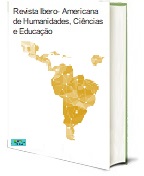DIGITAL IMPACT: DIABETES MELLITUS, TREATMENT AND PREVENTION OF SOCIOECONOMIC COMPLICATIONS
DOI:
https://doi.org/10.51891/rease.v8i5.5593Keywords:
Diabetes Mellitus. Health Education. Diabetes ComplicationsAbstract
Diabetes is a metabolic syndrome that occurs due to a lack of insulin and / or the inability of insulin to adequately exert its effects, causing an increase in blood glucose (sugar). The most common complications are: cardiovascular diseases, diabetic nephropathy, diabetic foot and diabetic retinopathy. Treatment and control depend directly on the patient's adherence and involve associated pharmacological and non-pharmacological measures. The objective of this work is to show not only how text messages and video conferencing can play an important role in the patient's adherence to treatment, but also help to prevent complications.To make this work, 512 articles were found, of these articles, filters were placed and 128 articles were left, from which 25 relevant articles were chosen to do the work. This is a qualitative review of the literature on DM and adherence to treatment, addressing the impacts of the digital age and its implications on quality of life due to stricter glycemic control. Showing that the educational program can be part of the co-adjuvant treatment of diabetes and increasing self-care in patients.
Downloads
Downloads
Published
How to Cite
Issue
Section
Categories
License
Atribuição CC BY

